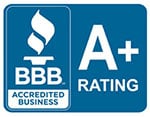Houston Energy Efficient Window – FAQs
Best Investments works with the leading manufacturers of high-performance, energy-efficient windows. Houston weather is more humid than other climates and you may not exactly what window is best for your home. While you may know exactly what style of window you want, selecting the most efficient window is not as easy. Confusing terminology and the vast number of options available can make choosing energy efficient windows an overwhelming process.
As a homeowner, it’s important to be aware of the components of a high-quality, energy-efficient window or skylight. To help you, the Window & Door Manufacturers Association has put together some of the most frequently asked questions and the answers to them.
Q. What is insulated glass?
A. Strictly speaking, “insulated” glass is a misnomer. What the term means is that there are two or more panes of glass separated by insulation at the edges and air in the center, which provides greater thermal efficiency.
Q. What is a gas-filled window?
A. Modern window technology seals an inert gas (usually argon) between the panes of glass. The gas is a far better insulator than just air, so it further increases the window’s thermal value.
Q. I’ve heard the term low-E glass. What exactly is that?
A. Low-E stands for low emittance. Simply put, the glass is coated with a virtually clear material that acts to cut the transmission of ultraviolet rays from outside to inside. Low-E glass further improves thermal efficiency of the window, cuts glare and prevents the damage that ultraviolet rays can cause to interior furnishings. If you are in a climate that has long, hot summers, low-E windows can make a big difference in your air-conditioning bill, too.
Q. What is the difference between R-value and U-value?
A. R-value is often citied in insulation literature, and U-value appears in published material on windows. Essentially R-value and U-value are two sides of the same coin. The term R-value is usually cited when discussing things as wall and ceiling insulation value, but it does not translate well to windows and other fenestration products, so the industry uses the term U-values instead. It’s important to note that these ratings relate to each other inversely: A higher R-value means better insulated are walls and ceilings, while with U-values, a lower number indicates that the window does a better job a of keeping out heat and cold.




Recent Comments